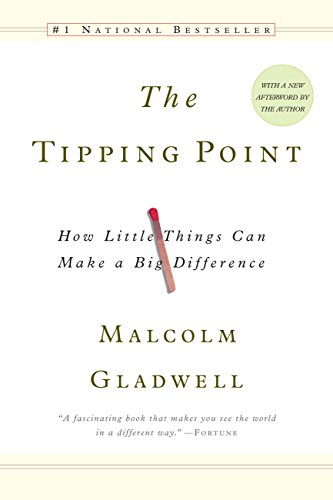

This article is an excerpt from the Shortform summary of "The Tipping Point" by Malcolm Gladwell. Shortform has the world's best summaries of books you should be reading.
Like this article? Sign up for a free trial here .
Tipping Points are all about small ways to make significant change. So-called Band-Aid solutions — despite the term’s negative connotations — can actually be the most effective strategies by taking focused, targeted action with the least amount of time, effort, and cost. Using a heavy amount of effort to tackle all aspects of a problem is not always possible or the best use of energy.
We’ll cover the analogy of the epidemic, look at a case study of band-aid solutions, and discuss why band-aid solutions are often the best solutions.
Why Band-Aid Solutions Are Effective
Before we dive into the power of Band-Aid solutions, let’s look at an analogy that indicates why Band-Aid solutions are effective.
You see the phenomenon every flu season: Someone in your office catches a bug, and within a week it seems half her department is infected. In two weeks, there are people showing those same flu symptoms in every department, and by the end of the month half the office has caught the bug.
Each person who catches the virus can infect a whole new set of people, and each of them does the same, in an ongoing ripple effect. The virus continues spreading this way, ultimately creating an epidemic. This is how epidemics grow through geometric progression: When a virus spreads, it doubles, and doubles again, and doubles again, and through that process it grows exponentially.
Ideas, messages, behaviors, and products can spread through a population in a social epidemic in the same way that viruses spread. Epidemics have a few common characteristics.
- Epidemics are contagious. Whether a virus or an idea, it passes quickly and easily from person to person.
- Small changes have big impacts. In the case of a flu going around the office, a change in the strain of the virus could make it last longer, which creates a bigger window of time that people are sick and can spread the germs. Or, something as small as running out of tissues or hand sanitizer in the conference rooms could make a significant difference in the virus’ spread.
- Epidemics don’t build gradually and steadily; they grow and reach a boiling point or critical mass, at which point they explode and turn into an epidemic. That threshold is called the tipping point.
It can be hard to wrap our head around the notion that drastic change happens at one particular point because we tend to think that significant changes occur in a steady progression (e.g. a river doesn’t flood instantaneously when a storm hits; the water steadily rises over hours of heavy rain). But the tipping point is a critical moment when minor change makes all the difference (e.g. the moment the water crests the river bank).
Think of snow: The difference between 34 and 31 degrees Fahrenheit doesn’t feel much colder than the difference between 37 and 34 degrees. But when that same three-degree drop happens at the tipping point — 32 degrees — rain becomes snow.
Just as minor changes cause catastrophes, minor fixes, or Band-Aid solutions, can help tempter them.
The Power of Band-Aid Solutions
As we’ve discussed with the three rules of epidemics, you just need to pinpoint the right tweak (or tweaks) to tip an epidemic — whether it’s finding the right messenger, changing your presentation, or altering the context. These can all be effective Band-Aid solutions.
Band-Aid Solution Case Study: Spreading Breast Cancer Awareness at Beauty Salons
A nurse named Georgia Sadler launched a grassroots campaign to raise awareness about diabetes and breast cancer. She started by hosting seminars in black churches, but she found that the few people who attended already knew about the diseases, so she wasn’t reaching a new or large audience. However, when she moved the campaign from churches to beauty salons, she had epidemic success. Sadler changed the context by meeting people where they already were spending time (at the hair salon), instead of asking them to fit another commitment into their schedules. This was a Band-Aid solution, but an effective one.
Sadler capitalized on the existing relationships between hair stylists and their regular clients. The stylists were Connectors, so she trained them on information about the diseases that they could share with their clients. She also had a folklorist train the stylists in strategies to deliver the information in a compelling way, with conversation starters and other tidbits that made the information fit a typical salon conversation.
Sadler followed up by assessing how well her campaign was changing women’s attitudes and motivating them to get mammograms and diabetes tests, and she found that it was successful. (Shortform note: The book doesn’t offer any way of quantifying that success.) Band-Aid solutions are often successful in combatting issues directly and quickly.
Tipping points can be so unpredictable and volatile because humans — whose behavior must change in order for an epidemic to tip — are themselves unpredictable and subject to a wide variety of influencing forces. The volatility of tipping points, while potentially puzzling, is hopeful; with the right strategic action, you can create massive change. Sometimes Band-Aid solutions are that strategic action.
———End of Preview———

Like what you just read? Read the rest of the world's best summary of "The Tipping Point" at Shortform . Learn the book's critical concepts in 20 minutes or less .
Here's what you'll find in our full Tipping Point summary :
- What makes some movements tip into social epidemics
- The 3 key types of people you need on your side
- How to cause tipping points in business and life






